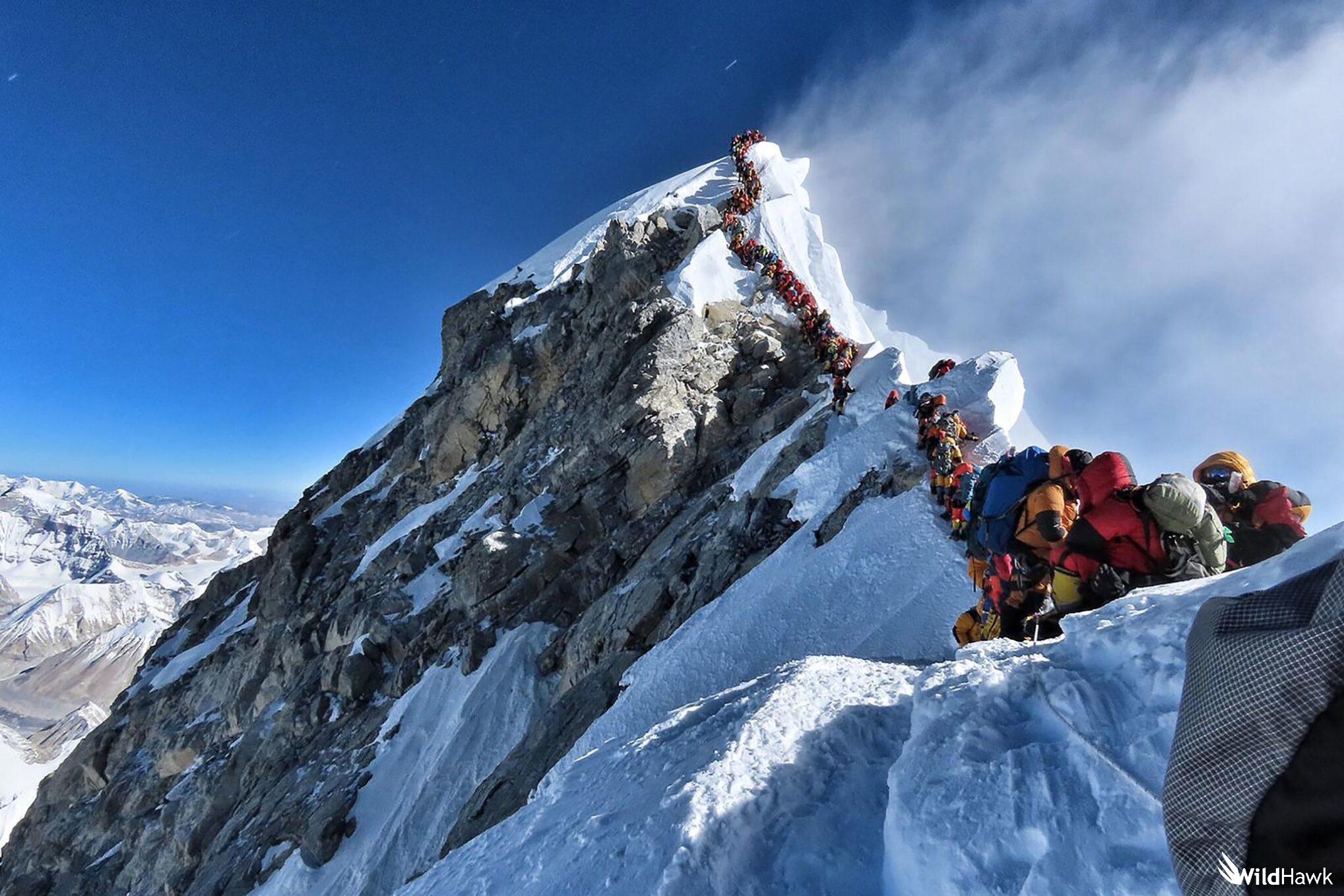<p>April 18th, 2014, stands as an ominous date in the annals of Everest&#8217;s history, casting a shadow over the towering peak with the loss of 16 lives and the suspension of the entire climbing season. Buckle up for a virtual expedition as we tread the hallowed South Col Nepal route, unravelling the layers of Everest&#8217;s mystique. In this journey, I extend a hearty invitation to join me as your guide, promising not just a climb but a voyage through the compelling history, untold challenges, and triumphant tales that define this iconic summit.</p>



<h2 class="wp-block-heading">A Tapestry Woven in Time</h2>



<p>In 1852, a Bengali surveyor engaged in the Grand Trigonometrical Survey of India unraveled Everest&#8217;s true identity. Sir George Everest&#8217;s name graced the peak, though it carried the weight of two other names: Chomolungma in Tibet, signifying &#8216;the goddess mother of earth,&#8217; and Sagarmatha in Nepal, translating to &#8216;forehead of the sky.&#8217; The 1920s marked the early attempts to conquer Everest, a peak elusive in its mystery. Pioneering expeditions, including George Mallory&#8217;s legendary 1924 ascent, laid the groundwork for future adventures, leaving behind not just footprints but an enduring mystery. Nepal eventually opened its doors, and in 1953, Sir Edmond Hillary and Sherpa Tenzing Norgay etched their names into history, forever altering the mystique of Everest.</p>



<h2 class="wp-block-heading">Sherpas: Giants Among Giants</h2>



<p>No Everest tale can be fully articulated without paying homage to the unsung heroes of the ascent—the Sherpas. These remarkable individuals, physically slight yet colossal in spirit, navigate the perilous path from Base Camp to the summit. Their sacrifices often go unnoticed, as they become the silent architects of countless successful climbs. Despite criticism for contributing to Everest&#8217;s unfortunate reputation as the world&#8217;s highest garbage dump, Sherpas remain indispensable to the triumphs on Everest. It&#8217;s a poignant call for responsible climbing, urging all adventurers to leave behind a legacy that transcends mere records.</p>



<h2 class="wp-block-heading">Decoding the Everest Conundrum</h2>



<p>Everest, with its 15 well-defined routes, is a labyrinth of challenges and triumphs. The South Col Nepal and North Col Tibet routes witness the footprints of intrepid climbers, while the untamed East Ridge whispers stories of uncharted adventures. From the oldest summiter, the resilient 80-year-old Yuichiro Miura, to the youngest, the audacious Jordan Romero at 13 years old, Everest&#8217;s summit has borne witness to extremes. Yet, the mountain has metamorphosed into more than a geographical marvel; it&#8217;s become a stage for peculiar records, from the highest marriage to the highest golf tee. As we navigate this conundrum, it&#8217;s imperative to reflect on the ecological impact of human activity on this sacred peak.</p>



<h2 class="wp-block-heading">Climbing Responsibly</h2>



<p>Stewards of Everest&#8217;s Legacy: With Everest predominantly climbed during the spring months of April-May and sporadically in September-October, the climb-to-death ratio stands as a stark reminder of the inherent challenges in scaling this mighty peak. It&#8217;s time for climbers to metamorphose into stewards of this pristine environment, adopting responsible practices to preserve Everest&#8217;s sanctity. While the allure of the summit persists, the focus must shift towards sustainable climbing, ensuring Everest&#8217;s legacy endures for generations to come.</p>



<h2 class="wp-block-heading">Conclusion</h2>



<p>As we unfold the layers of Everest&#8217;s history, challenges, and triumphs, let this virtual journey serve not merely as a recounting but as a testament to the awe-inspiring beauty and inherent risks that define the world&#8217;s highest peak. May it kindle a collective commitment to responsible climbing, fostering a legacy that transcends records and embraces the spirit of adventure with profound respect for the natural wonder that is Everest. This isn&#8217;t just a climb; it&#8217;s an odyssey through peaks and stories, inviting you to be a part of Everest&#8217;s enduring narrative.</p>

